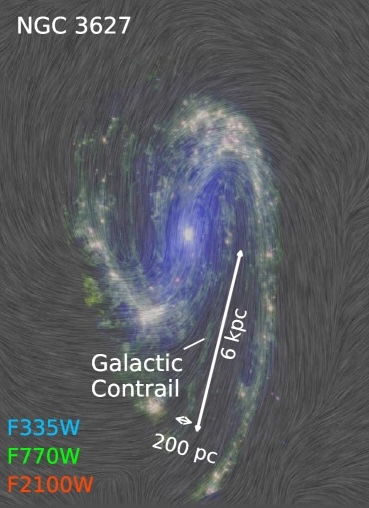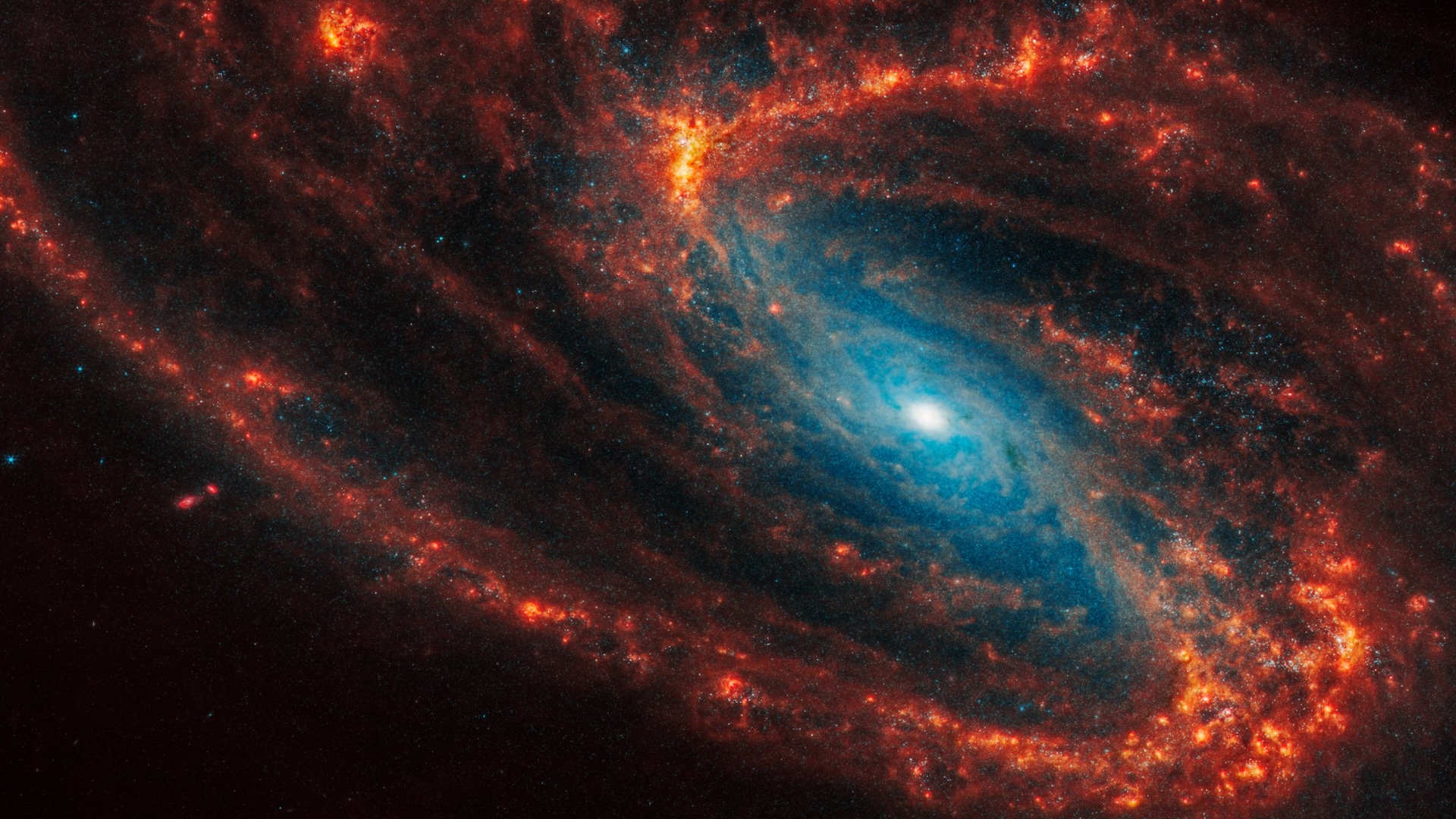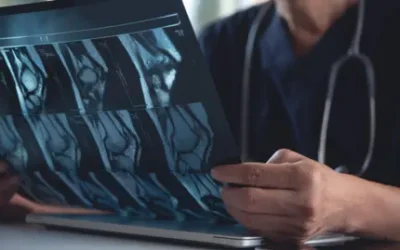Astronomers have identified an immense cosmic trail of gas and dust in a distant galaxy. Scientists propose this colossal structure may have been sculpted by a massive black hole passing through, though other explanations for its formation are also under consideration, a new study reveals.
Nestled within the constellation Leo, approximately 31 light-years from our solar system, the spiral galaxy NGC 3627 is where a contrail has recently been observed.
Astronomers have uncovered the most distinctly defined contrail ever observed, located within the NGC 3627 galaxy. While contrails have been previously detected in the Milky Way, this particular discovery stands out due to its extraordinary dimensions. Study co-author Mengke Zhao, a doctoral student in astronomy at Nanjing University in China, highlighted its “remarkable for its sheer size.” Stretching approximately 20,000 light-years in length—roughly one-fifth the diameter of our own galaxy—the contrail maintains an astonishing narrowness, measuring just 650 light-years across.
Researchers Zhao and Guang-Xing Li unexpectedly uncovered a distinctive galactic contrail during their analysis of data from the Physics at High Angular Resolution of Nearby Galaxies (PHANGS) survey. This comprehensive scientific endeavor utilizes an array of advanced telescopes, notably the James Webb Space Telescope (JWST) and Chile’s Atacama Large Millimeter/submillimeter Array (ALMA), to meticulously investigate how gas dynamics and star formation processes influence, and are in turn influenced by, the structure and evolution of galaxies. Findings from the PHANGS-JWST observations indicated the contrail, linked to galaxy NGC 3627, contained dust particles, while complementary data from PHANGS-ALMA confirmed it was also rich in carbon monoxide.

A faint, linear trail of gas and dust, distinct from a galaxy’s two spiral arms, has been identified as a “contrail.” Researchers Zhao and Li hypothesize that a massive compact object, most likely a black hole, is responsible for its formation. This theory is rooted in a 2021 theoretical model co-developed by Li, which posits that the object’s passage through the galactic disk compressed the gas, thereby creating the contrail as a marker of its trajectory. The significant turbulence observed within the contrail of NGC 3627 strongly supports this proposed mechanism.
Analysis of a celestial contrail has enabled researchers to determine that the compact object responsible for its formation possesses an estimated mass of 10 million solar masses. This colossal entity is believed to be traveling at an astonishing velocity of 186 miles per second (300 kilometers per second), a speed 50% greater than the current record held by the Parker Solar Probe, the fastest spacecraft ever built. Further calculations suggest the contrail itself originated approximately 20 million years ago, a timeframe considered remarkably recent within the vast expanse of astronomical history, especially when compared to the Milky Way’s age of over 13 billion years.
Researchers have advanced two potential explanations for the compact object’s identity: a colossal black hole or the dense nucleus of a dwarf galaxy.
Scientists currently lack the definitive data to distinguish between two prevailing hypotheses, according to Zhao, as the object’s predicted mass aligns perfectly with both scenarios. Directly observing the entity presents a formidable challenge; if it is a faint dwarf galaxy, its extreme dimness at the vast distance of NGC 3627 renders it virtually undetectable with current technology. Researchers anticipate that future deep optical surveys or exceptionally high-resolution ALMA observations may one day reveal the elusive object.
Investigators further hypothesized that “little red dots,” described as mysterious, compact crimson entities, might also be responsible. The specific manner of their influence, however, remains undetermined.
Zhao and Li are poised to intensify their investigation into the contrail, concurrently sifting through PHANGS observations in search of further analogous streams.
Zhao stated that probing the evolutionary paths and prevalence of these massive, dark objects could provide substantial insights into their total population within galactic disks.
The study’s findings, currently awaiting formal peer review, are accessible as a preprint on the arXiv server.







